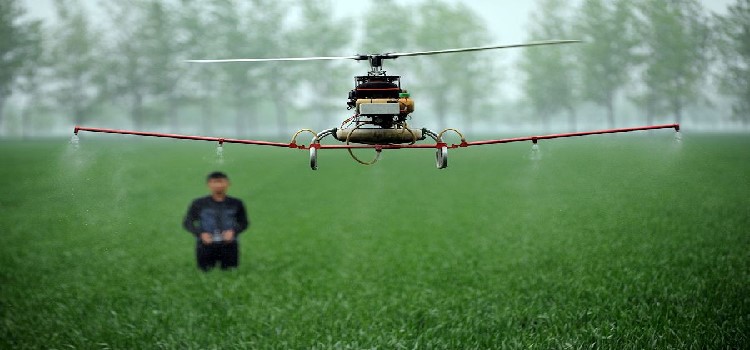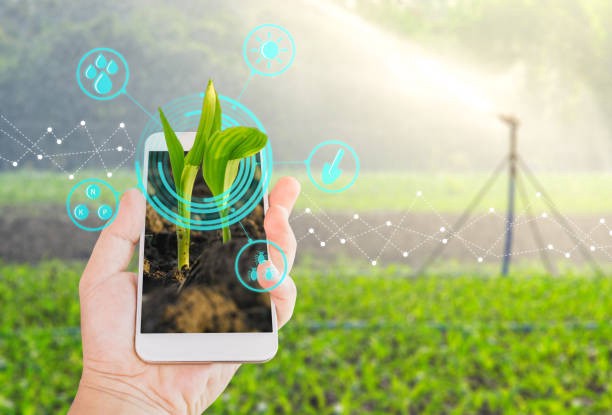
Germany Agriculture Robots Market by Type (Driverless Tractors, Unmanned Aerial Vehicles (UAVs), Milking Robots, Automated Harvest Robots, and Others), Offering (Hardware, Software, and Services), Farming Type (Indoor Farming and Outdoor Farming), Application (Dairy Management, Irrigation Management, Harvest Management, Soil Management, Inventory Management, and Others), and End User (Field Crops, Fruits & Vegetables, Livestock, and Others) – Opportunity Analysis and Industry Forecast 2023–2030
Industry: Agriculture | Publish Date: 14-Jul-2023 | No of Pages: 88 | No. of Tables: 73 | No. of Figures: 31 | Format: PDF | Report Code : N/A
Market Definition
Germany Agriculture Robots Market was valued at USD 0.31 billion in 2022, and is predicted to reach USD 1.05 billion by 2030, with a CAGR of 15.4% from 2023 to 2030. Agricultural robots, also known as agribots or agri-robots, are machines designed to automate or semi-automate various tasks in the field of agriculture. The functionalities of these robots include planting, harvesting, monitoring, and spraying crops. These robots are developed to improve efficiency, productivity, and accuracy in agriculture while reducing the dependence on manual labor and enhancing working conditions for farmers. They utilize advanced technologies like computer vision, artificial intelligence (AI), and others.
Agribots are equipped with sensors, actuators, and intelligent algorithms that enable them to perceive their environment, make decisions, and carry out specific actions. These robots can navigate through fields using GPS or mapping technologies to perform tasks such as planting seeds, harvesting crops, applying pesticides or fertilizers, and monitoring crop health. They use computer vision to identify and differentiate between crops and weeds, detect pests or diseases, and make precise actions accordingly.
Germany's Strong Agricultural Industry Spurs Adoption of Agriculture Robots
Germany has a well-established and diverse agricultural industry, ranging from large-scale commercial farming to smaller family-owned operations. The need for increased efficiency, productivity, and competitiveness is driving farmers to explore new technologies, including agriculture robots. The strong agricultural industry provides a favorable market for the adoption of robotics, which is further contributing to the growth of the agriculture robots market in Germany. By integrating robotics into their farming practices, they aim to streamline workflows, reduce costs, and increase overall productivity.
Sustainable Agriculture Fuels Adoption of Agriculture Robots in Germany
Germany's agriculture industry is renowned for its robustness and diversity, encompassing both large-scale commercial farming enterprises and smaller family-owned operations. In this highly competitive landscape, farmers are continuously seeking ways to enhance efficiency, increase productivity, and maintain competitiveness in the global market. As a result, there is a growing interest in exploring new technologies, including the adoption of agriculture robots.
Farmers recognize the potential of agriculture robots to revolutionize their operations by automating labor-intensive tasks, improving precision, and optimizing resource utilization. By integrating robotics into their farming practices, they aim to streamline workflows, reduce costs, and increase overall productivity. Thus, it is expected to create significant growth in the agriculture robots market.
Lack of Regulatory Challenges and Standards
The adoption and integration of agriculture robots in Germany face challenges related to regulatory frameworks and standards. The evolving nature of robotics technology and its application in agriculture requires clear guidelines and regulations to ensure safety, data privacy, and ethical use. The absence of standardized regulations specific to agriculture robots can create uncertainty and hinder the widespread adoption of these technologies.
Introduction of Smart Farming in Germany
The adoption of smart farming in Germany to optimize farm operations is expected to create ample opportunity for the agriculture robots market in the country. As smart farming involves the use of agriculture robots, which are equipped with advanced sensors that can collect data on plant growth, soil moisture, nutrient levels, and more, providing farmers with valuable insights to enhance productivity and sustainability.
Competitive Landscape
The agriculture robots industry includes several market players such as Deepfield Robotics, AgHero, Blue Danube Robotics, FarmDroid, ecoRobotix, VegSystems, Pottinger, CLAAS, Deutz-Fahr, and Horsch. These market players are adopting various strategies such as new launches to maintain their dominance in the market of Germany.
Key Benefits
-
The Germany agriculture robots market report provides a quantitative analysis of the current market and estimations through 2023-2030 that assists in identifying the prevailing market opportunities to capitalize on.
-
The study comprises a deep dive analysis of the market including the current and future trends for depicting the prevalent investment pockets in the market.
-
The information related to key drivers, restraints, and opportunities and their impact on the market is provided in the report.
-
The competitive analysis of the market players along with their market share in the Germany agriculture robots market.
-
The SWOT analysis and Porter’s Five Forces model are elaborated in the study.
-
Value chain analysis in the market study provides a clear picture of the stakeholders’ roles.
Germany Agriculture Robots Market Key Segments
By Component
-
Driverless Tractors
-
Unmanned Aerial Vehicles (UAVs)
-
Milking Robots
-
Automated Harvest Robots
-
Others
By Offering
-
Hardware
-
Software
-
Services
By Farming Type
-
Indoor Farming
-
Outdoor Farming
By Application
-
Dairy Management
-
Irrigation Management
-
Harvest Management
-
Soil Management
-
Inventory Management
-
Others
By End User
-
Field Crops
-
Fruits & Vegetables
-
Livestock
-
Others
KEY PLAYERS
-
GEA Group
-
CNH Industrial
-
Delaval
-
Deere & company
-
AGCO CORPORATION
-
Trimble Inc.
-
Naio Technologies
-
Yanmar Holdings Co. Ltd.
-
SZ DJI Technology co. Ltd.
-
Boumatic
-
Harvest Automation Inc
-
Autonomous Solution Inc
-
Clearpath Robotics
-
Ageagle Aerial System
-
Kubota Corporation




 Speak to Our Analyst
Speak to Our Analyst

































